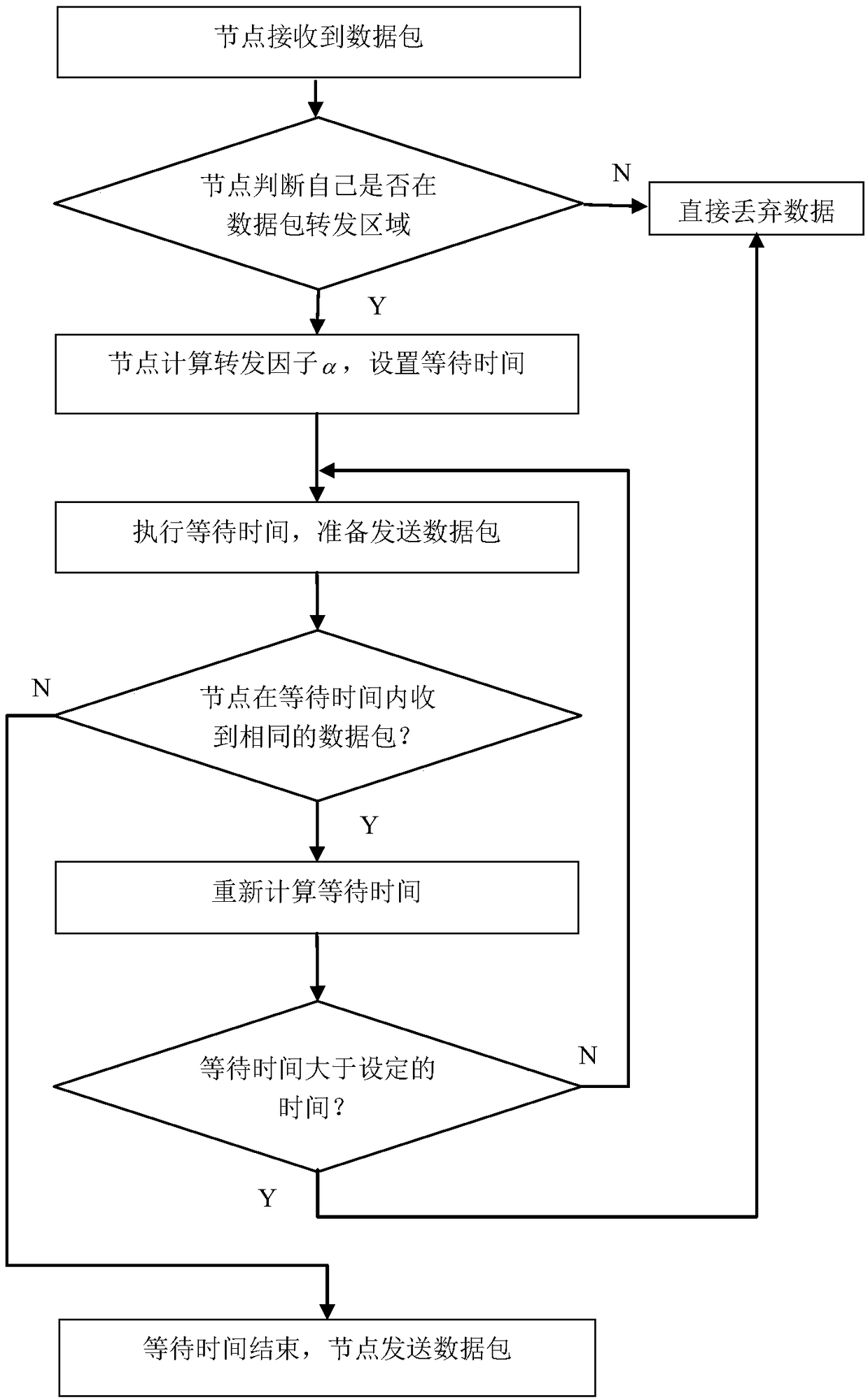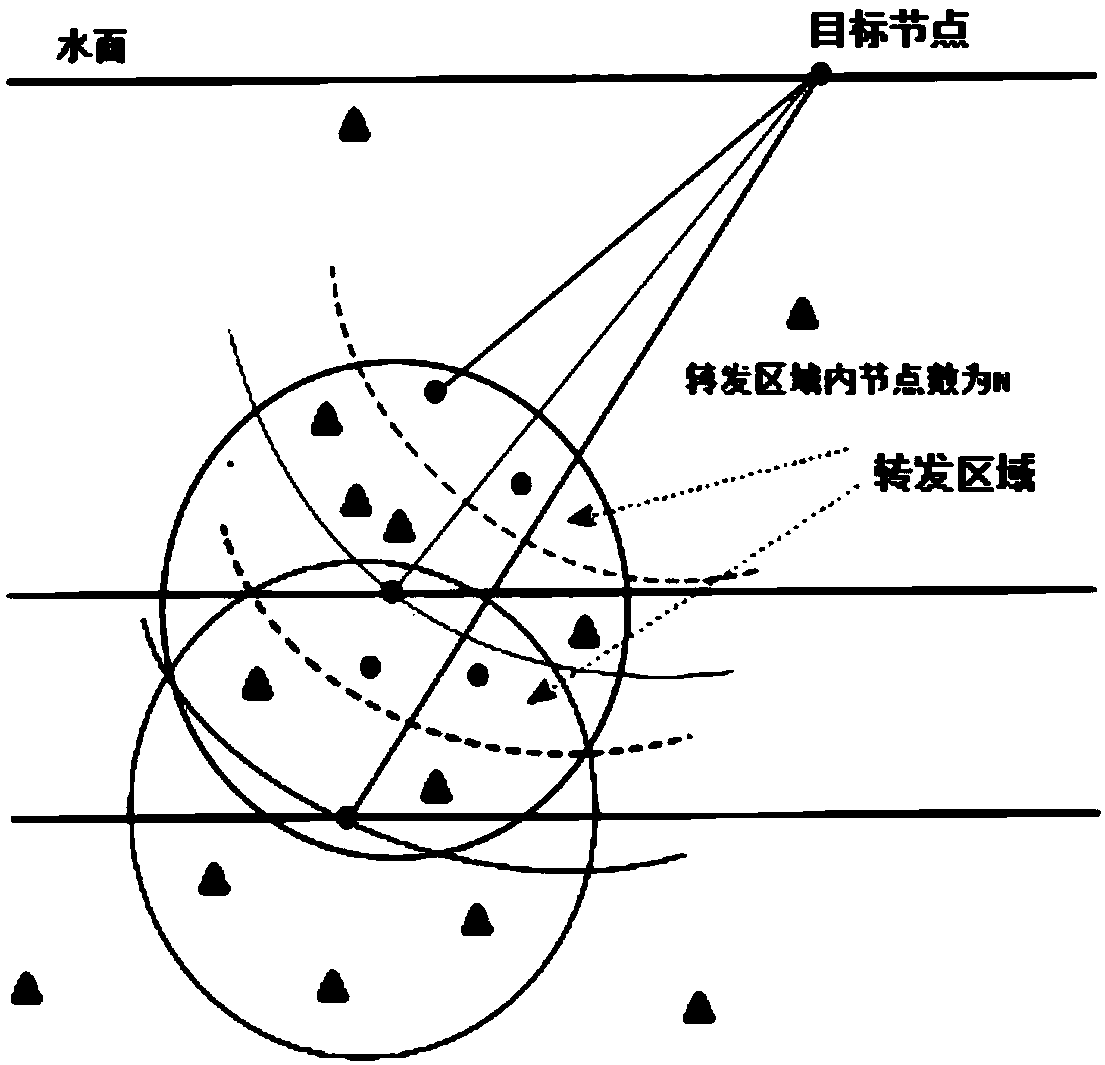Distance-based energy balance dynamic geographic routing method in underwater sensor network
An underwater sensor and geographic routing technology, applied in network topology, electrical components, wireless communication, etc., can solve problems such as uneven distribution of network node density and difficult control of cone angle θ
- Summary
- Abstract
- Description
- Claims
- Application Information
AI Technical Summary
Problems solved by technology
Method used
Image
Examples
Embodiment Construction
[0043] The distance-based energy balance dynamic geographical routing method in the underwater sensor network of the present invention will be described in detail below with reference to the embodiments and the accompanying drawings.
[0044] Such as figure 1 Shown, in the underwater sensor network of the present invention, based on the energy balance dynamic geographical routing method of distance, comprises the steps:
[0045] 1) Establishment and maintenance of neighbor node table;
[0046] The establishment of the neighbor node table is that each sensor node in the underwater sensor network broadcasts data packets respectively, and when each sensor node receives the data packets broadcast by adjacent sensor nodes for the first time, it records the corresponding The identification and location information of the adjacent sensor nodes form a neighbor node table.
[0047] The maintenance is that when the sensor node receives a data packet sent by an adjacent sensor node, if...
PUM
 Login to View More
Login to View More Abstract
Description
Claims
Application Information
 Login to View More
Login to View More - R&D
- Intellectual Property
- Life Sciences
- Materials
- Tech Scout
- Unparalleled Data Quality
- Higher Quality Content
- 60% Fewer Hallucinations
Browse by: Latest US Patents, China's latest patents, Technical Efficacy Thesaurus, Application Domain, Technology Topic, Popular Technical Reports.
© 2025 PatSnap. All rights reserved.Legal|Privacy policy|Modern Slavery Act Transparency Statement|Sitemap|About US| Contact US: help@patsnap.com



